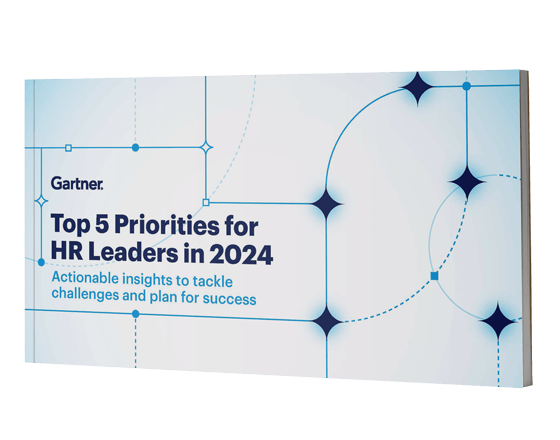Barriers to diversity and inclusion in the workplace
Diversity and inclusion (D&I) is essential for those organisations that wish to provide and maintain a workplace that is both both productive and attractive to future employees. Much research has been done that highlights how D&I helps to attract the best talent, increase employee retention, improve the company’s reputation and improve business performance through innovation. In turn, companies with a focus on increasing D&I in the workplace tend to outperform competitors that attribute less importance to this and show unconscious bias. In a time where competition is so high, and the development in the technology industry is ever evolving, employing a diverse team of individuals who present imagination, creativity and ingenuity can make businesses stand out from the rest and stay ahead.
Barriers to diversity and inclusion
There are many barriers to diversity and inclusion and unless these are navigated correctly, the organisation is going to suffer, especially when it comes to recruiting and integrating a diverse mix of people who can bring value to the operation.
It is only when management commits wholeheartedly to D&I that success can be achieved. This includes being aware of the common roadblocks and knowing what to look out for. This way, problems can more easily be detected and plans put in place to navigate and solve them.
Let’s look at some of the more frequently occurring barriers to inclusion and barriers to diversity that may manifest in the workplace:
Unconscious bias/stereotyping – Many people make assumptions based on unconscious bias and stereotyping. The problem increases when individuals are grouped and over-generalised, having come from similar backgrounds (such as by gender, age and culture). The result is a group of staff who, without conscious awareness, show an automatic affinity or preference for those who are similar to them. This is a huge barrier to diversity and inclusion, making those that are recruited without a similar background feel potentially very uncomfortable and unwelcome. This barrier can be difficult to identify and manage as the bias itself is not often a conscious or malicious one.
Gaps in leadership skills – If leaders are not sufficiently equipped to work with a diverse team, the weaknesses of the organisation are magnified. All the hard work and effort that has gone into building a diverse team can be wasted. Leaders need to be armed with the necessary skills and training to manage a diverse team whilst overcoming differences. If necessary, this can be improved by the use of specialist training programmes. Training, whilst encouraging individuals to take a proactive approach to improving D&I in the workplace, also makes it easier for team members to identify when perhaps things aren’t as inclusive as they could be.
Tick-box mentality – If staff are used to following instructions that never differ and encouraged to not use their natural abilities or innate knowledge, this can result in a tick-box mentality. This is absolute taboo when it comes to promoting a corporate culture based on D&I. Management needs to remove policies based upon hitting quotas by merely ticking a box. This might look good on paper but rarely works in practice.
Lack of prioritisation – if D&I comes bottom of the pile when it comes to tackling business issues, the company is never going to prosper in the way it intends. Only keeping an eye on financial targets and paying little interest to diversity and inclusion results in a company that looks good from an accounting point of view but one that will soon begin to flounder as the importance of D&I becomes diluted.
Selection according to merit – organisations may pay particular attention to general employee selection based upon merit but take their eye off the goal when appointing and assessing senior-level staff. Instead of management being placed according to their accomplishments, other subjective criteria need to be applied that have their roots in D&I.
These are just a few of the barriers that may manifest when trying to create an organisation rich in diversity and inclusion. Whilst they may appear fairly basic, they are powerful enough to destroy an organisation’s D&I goals.
Overcoming barriers to diversity and inclusion
The best way to overcome these barriers is for organisations to be proactive by taking the following diversity and inclusion best practices:
Leaders must walk the talk – Paying lip service to D&I is never enough and will not work. Management needs to lead from the top and show that they are devoted to following the path of D&I. When staff see that management is passionate and committed they are far more likely to become motivated and less sceptical. In addition, leaders who represent diversity and inclusion themselves can act as good examples of the benefits of increasing D&I and provide the team with appropriate support and guidance.
Make D&I mainstream – Those that come from underrepresented groups will feel less uncomfortable if conversations around diversity and inclusion are mainstream rather than furtive discussions taking place off to the side. These members of staff should never be made to feel marginalised.
Be focused and goal-oriented – Never sideline the organisation’s D&I goals or leave things to chance. Leaders need to take charge and make it clear that the company is not interested in anything that might threaten its agenda. D&I goals should also be made to align with other goals, such as employing an innovative workforce that will help keep up with competition, or improving staff retention which helps with reducing turnover and controlling costs.
Appoint the right leaders – The best leaders to promote D&I are those who are personally invested and who can empower staff. At times, they will need to be brave, standing up for what is right and leading the way when it comes to transforming a homogenous culture into one that is diverse. One way of delaying progress is to put the wrong type of leader in charge. The ability to be authoritative, inclusive, innovative and challenge their team to evolve, are crucial aspects of a good leader.
Replace hierarchy with meritocracy – The team should be made up of a diverse talent pool with people placed according to merit. Encourage staff from different backgrounds to push themselves forward, giving due importance to their opinions and ideas. By ensuring diversity and inclusion is encouraged at every level in the company means there’s a better chance for innovation and creativity throughout the entire business structure.
Introduce a measurement system – Measuring the progress of D&I is essential to achieving success. It’s pointless listening to management who may paint a rosy picture, only to find that delivery of D&I is not going as it should. A system should be used to monitor progress and instil proactive activities.
Conclusion
Diversity and inclusion initiatives in the workplace are best achieved when companies are truly committed to valuing the impact that everyone can bring to the organisation. It is impossible to have an inclusive culture unless the contributions everyone is making are genuinely valued and respected.
The GC Index is a universal language that will empower more than 10% of humankind to positively impact their world. By leveraging The GC Index language and data, organisations are able to provide everyone a level playing field to be at their potent best and in turn drive a truly inclusive organisational culture.
When businesses go all out to form an inclusive culture underpinned by The GC Index it helps empower the diversity of others, a foundation develops that future-proofs and transforms. By overcoming the traditional barriers to diversity and inclusion in the workplace, a road to success will be created, measurable in terms of customer satisfaction and overall performance.



